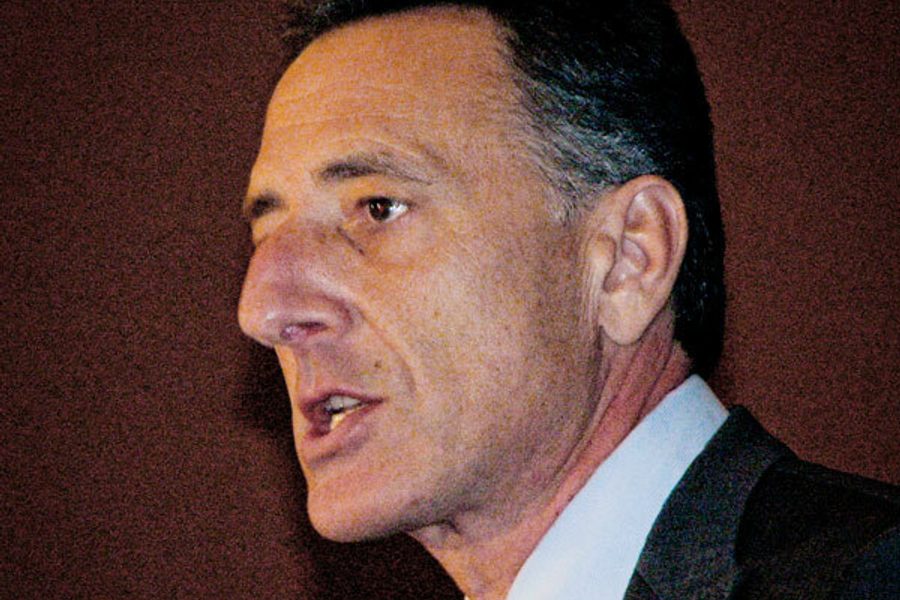Vermont’s Single-Payer Salvation
The Green Mountain State is poised to abolish most forms of private health insurance.
Lauren Else

Three weeks after the House of Representatives voted to repeal last year’s landmark healthcare reform legislation, and one week after a federal judge ruled the bill’s insurance mandate unconstitutional, Vermont’s leaders decided to take matters into their own hands.
On February 8, newly inaugurated Democratic Gov. Peter Shumlin unveiled his plan for a publicly funded single-payer healthcare system, which was introduced into the state’s legislature. If enacted, which appears likely, it will be the first system of its kind in the United States and Vermont would become the first state to abolish most forms of private health insurance.
“In five years, I predict the United States will go through another major debate of how to reform the healthcare system,” Harvard School of Public Health Professor William Hsiao told the state’s legislators in January, noting his belief that the federal reform legislation passed in March 2010 will not solve the nation’s healthcare crisis. “The question for Vermont is, do you want to walk ahead of the United States? Do you want to be a model for the United States?”
Last year, lawmakers passed a bill to hire a team of consultants led by Hsiao – an economist who helped to develop universal healthcare plans in Taiwan and reform Medicare and Medicaid in the 1970s – to design a new healthcare system for the Green Mountain State. According to Hsiao’s research, about 32,000 people, or roughly five percent of the state’s population, would still be uninsured after federal reform measures take full effect in 2014. (Fifty seven thousand, or 9 percent, of Vermonters are currently uninsured.)
What Hsiao and his team ended up recommending to the state was a single-payer system that would ensure coverage for all residents. An independent public body would oversee the system and contract out administration of all claims. Private insurers could compete for this work, as they have done for years to administer the state’s Medicare program. The bill, currently in committee, would take an estimated three to six years to implement.
“I know what I’m going to present is not necessarily popular for everyone,” Hsiao said as he began his January presentation in Montpelier. “A health system is a complex system.” The annual savings that would be created by the system, however, do appear to be popular among lawmakers and public officials. Hsiao’s team estimates the single-payer system could save the state at least $580 million yearly, or $1.2 billion by 2019, and create 4,000 jobs because the burden of rising healthcare costs would be lifted from businesses.
On February 24, the Republican Mayor Christopher Louras, of Rutland, urged the state to adopt the single-payer legislation, noting that more than a third of the city’s $7 million annual payroll is consumed by healthcare costs. “The only way to fix the problem is to blow it up and start over,” Louras said.
The introduction of the healthcare bill comes in the first months of Democratic Gov. Peter Shumlin’s first term in office, which follows eight years of Republican rule under Gov. Jim Douglas. Shumlin supported a single-payer healthcare system during his campaign, calling Vermont’s current system “broken.” Anya Rader Wallack, the special assistant to Shumlin on healthcare, cited waste and “craziness” as factors troubling the state’s current healthcare system during testimony before Vermont House and Senate committees on February 8. Three private insurance carriers operate in Vermont, along with Medicare and Medicaid and various suppliers of workers’ compensation insurance, a structure Wallack called “misguided.”
Dr. Deborah Richter, president of Vermont for Single Payer, which has advocated for a new health system since 2003, says that “on the whole” the group supports Hsiao’s plan. “Estimates are that [Hsiao’s system] will not only be able to cover everybody, but for less money,” Richter says. “Vermont is uniquely poised to get this done.”
The state cannot “get this done,” however, unless it receives a waiver from the federal government to bypass the federal reform legislation. Shumlin thinks that won’t be a problem; Vermont’s entire congressional delegation – Sens. Bernie Sanders (I) and Patrick Leahy (D) and Rep. Peter Welch (D) – support the single-payer effort and introduced a measure to allow states to receive waivers from federal reform requirements as soon as 2014, as long as they cover as many uninsured people as federal law would. (They currently have to wait until 2017.) On February 28, President Barack Obama told state governors he would support the earlier date.
Hsiao seems optimistic. “I can say with full confidence that your broken system can be fixed,” Hsiao counseled Vermont lawmakers. “But we require you to…adopt the right solution.”





